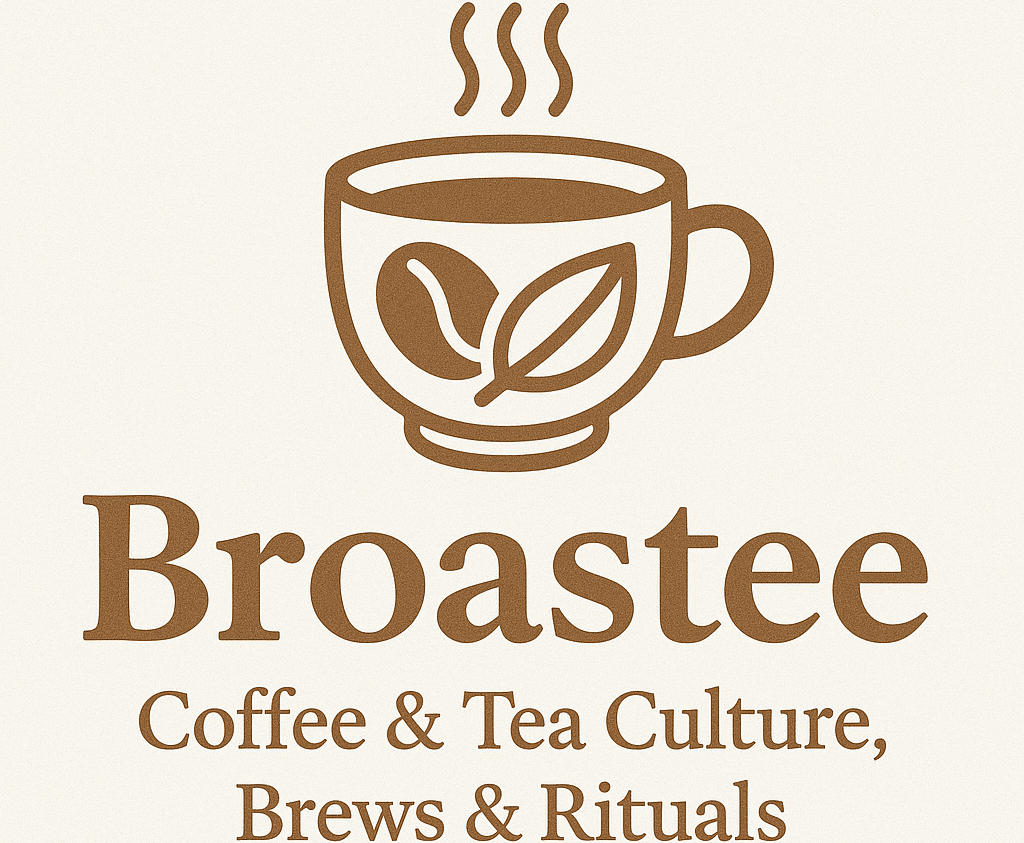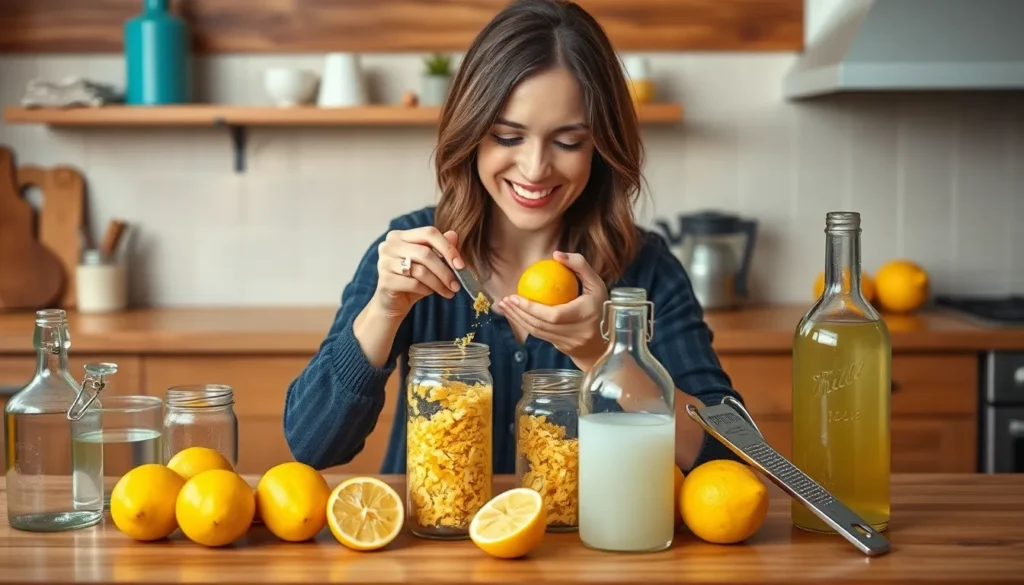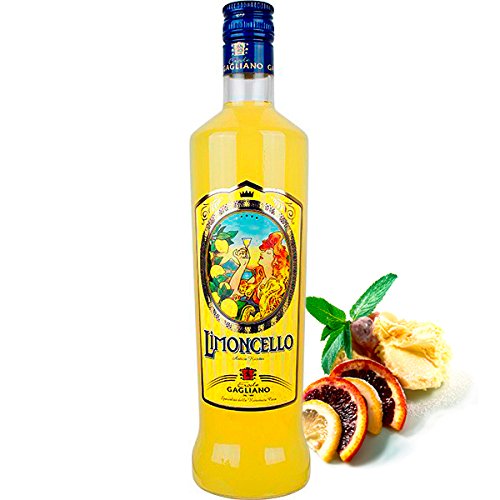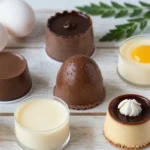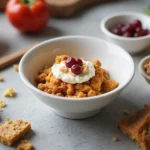The golden Italian sunshine captured in a bottle – that’s what we love most about limoncello. This beloved digestif from the Amalfi Coast transforms simple lemons into liquid poetry that’s been enchanting taste buds for centuries. Whether you’re sipping it ice-cold after dinner or using it to elevate your favorite desserts we guarantee this citrusy elixir will become your new obsession.
What makes limoncello truly magical is its deceptive simplicity. With just four ingredients – lemon zest vodka sugar and water – you can create restaurant-quality liqueur right in your own kitchen. The secret lies in patience and quality lemons which slowly infuse their oils into the alcohol creating that signature bright flavor and silky texture.
We’re excited to share our foolproof limoncello recipes that’ll have you creating this Italian treasure at home. From traditional methods to creative variations these recipes will turn your kitchen into a Mediterranean paradise and impress every guest who walks through your door.
What You Need to Know About Making Limoncello
Creating authentic limoncello at home requires understanding several crucial factors that distinguish exceptional batches from mediocre ones. We’ve discovered that success hinges on mastering exact techniques and timing rather than simply following a recipe.
Lemon Selection Makes All the Difference
The foundation of outstanding limoncello starts with choosing the right lemons. We recommend using organic lemons exclusively since you’ll be infusing the peels directly into alcohol. Conventional lemons often carry wax coatings and pesticide residues that can compromise your final product’s flavor and safety.
Meyer lemons produce a sweeter and more aromatic limoncello while traditional Eureka lemons deliver the classic tart profile most people expect. Sorrento lemons remain the gold standard if you can source them. These Italian varieties offer thick fragrant peels with minimal bitter white pith.
The Zesting Process Requires Precision
Proper zesting technique determines whether your limoncello achieves silky smoothness or bitter harshness. We always use a microplane zester or vegetable peeler to remove only the yellow outer layer. The white pith beneath contains compounds that create unpleasant bitterness during extended infusion periods.
Work quickly when zesting to preserve the essential oils within the peel. Fresh lemon zest releases more aromatic compounds than zest that sits exposed to air for extended periods.
Alcohol Selection and Strength Matter
High proof vodka between 80 and 100 proof extracts lemon oils most effectively. We prefer neutral grain spirits when available since they allow the lemon flavors to shine without competing alcohol notes. Vodka works perfectly for home production and remains widely accessible.
Lower proof spirits require longer infusion times and may not extract oils completely. Higher proof options above 100 can extract bitter compounds more aggressively than desired.
Temperature and Time Control the Outcome
The infusion process demands patience and consistent cool temperatures. We store our infusing mixture in dark cool locations between 60 and 70 degrees Fahrenheit. Temperature fluctuations can affect extraction rates and final flavor balance.
Minimum infusion time spans two weeks though we recommend four to six weeks for optimal flavor development. Some recipes suggest shorter periods but extended infusion creates more complex and rounded flavors.
Simple Syrup Preparation Affects Texture
The sugar syrup component requires careful attention to ratios and preparation methods. We dissolve sugar completely in water using gentle heat to avoid caramelization. Cool the syrup completely before combining with the alcohol infusion to prevent cloudiness.
Sugar to water ratios typically range from 1:1 to 2:1 depending on desired sweetness levels. Traditional recipes lean toward higher sugar content while modern versions often reduce sweetness to highlight lemon flavors more prominently.
Essential Equipment for Limoncello Making
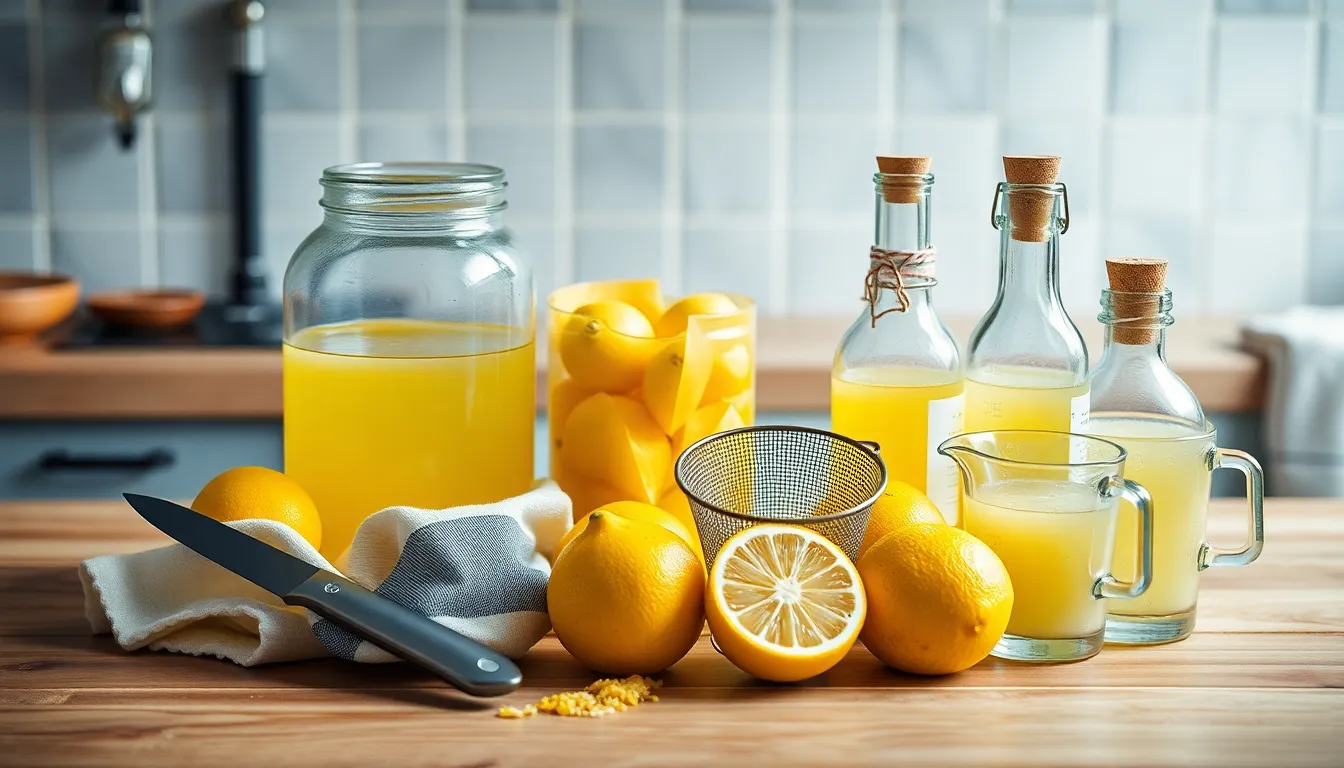
Creating exceptional homemade limoncello requires exact tools that ensure proper infusion and professional results. We recommend gathering these essential items before beginning your limoncello journey to streamline the process and achieve optimal flavor extraction.
Infusion Container Requirements
A large glass jar or food-grade container serves as the foundation for successful limoncello production. We prefer using a 2-liter glass jar that accommodates the full batch while providing adequate space for proper alcohol circulation around the lemon peels. Glass containers prevent unwanted chemical reactions that can occur with plastic materials during the extended infusion period.
Zesting and Peeling Tools
Your lemon preparation relies heavily on quality zesting equipment. A sharp knife works effectively for removing large strips of lemon peel while a dedicated zester creates finer pieces that release oils more efficiently. We find that microplane zesters produce consistent results and help avoid the bitter white pith beneath the lemon’s surface.
Filtering and Straining Equipment
Proper filtration separates the finished limoncello from the infused peels and any sediment. Muslin cloth provides excellent filtration for smooth results while fine mesh strainers offer an alternative filtering method. We recommend using both methods in sequence for crystal clear limoncello that matches commercial quality standards.
Bottling and Storage Supplies
Glass bottles with tight-fitting corks preserve the limoncello’s flavor and prevent oxidation during storage. We suggest selecting bottles that hold between 375ml to 750ml for convenient serving sizes. A funnel becomes indispensable for transferring the finished product without spills or waste.
| Equipment Category | Essential Items | Purpose |
|---|---|---|
| Infusion | 2-liter glass jar | Alcohol and peel steeping |
| Preparation | Knife or zester | Lemon peel removal |
| Filtering | Muslin cloth, fine strainer | Liquid clarification |
| Storage | Glass bottles with corks | Final product preservation |
| Transfer | Funnel | Clean liquid handling |
Measuring and Mixing Tools
Accurate measurements ensure consistent results across batches. We use standard measuring cups for the simple syrup preparation and a reliable kitchen scale for precise lemon quantities. A long-handled spoon facilitates gentle stirring without disturbing the settled peels during the infusion process.
Optional Enhancement Equipment
Homemade limoncello kits simplify the entire process by including pre-selected infusion jars, bottles, and funnels in convenient packages. These kits eliminate guesswork in equipment selection and ensure all components work together seamlessly. We find these particularly helpful for first-time limoncello makers who want guaranteed compatibility between all tools.
Ingredients
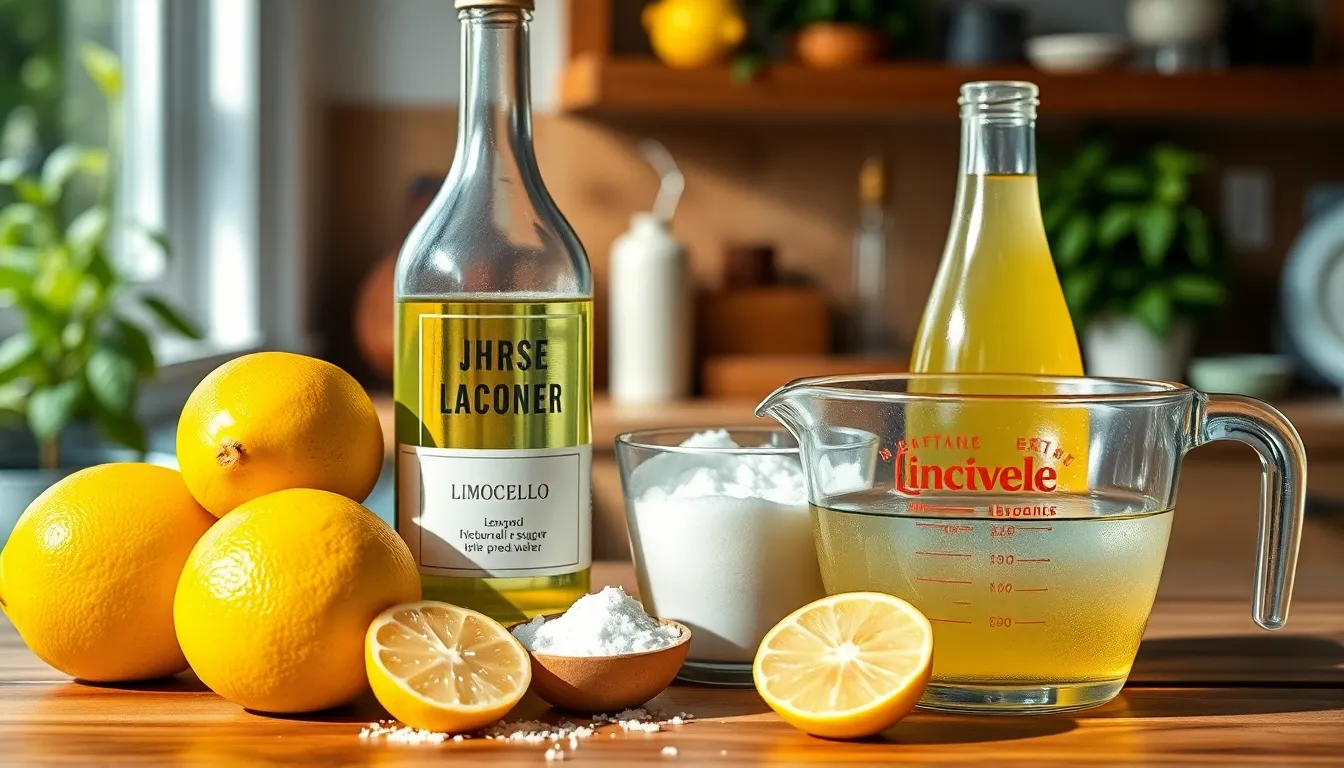
Creating exceptional limoncello starts with gathering the right ingredients in precise proportions. We’ll explore both traditional and creative variations to help you create the perfect batch.
For Basic Limoncello
The foundation of authentic limoncello requires just four simple ingredients that work together to create this beloved Italian digestif:
- 8-12 organic lemons (preferably Sorrento or Eureka varieties for authentic flavor)
- 1 quart (1 liter) high-proof alcohol (95% Everclear or 100-proof vodka works best)
- 4-6 cups white granulated sugar (adjust based on desired sweetness level)
- 6-10 cups filtered water (for creating the simple syrup base)
Organic lemons prevent wax and pesticide residues from affecting your final product. High-proof alcohol extracts the essential oils more effectively than standard spirits. The sugar-to-water ratio determines your limoncello’s sweetness and body.
For Limoncello Variations
Creative variations allow us to explore different flavor profiles while maintaining the classic limoncello essence:
Herbal Limoncello:
- Basic limoncello ingredients (listed above)
- 2-3 sprigs fresh basil or 1-2 sprigs fresh mint
Spiced Limoncello:
- Basic limoncello ingredients
- 2-3 cinnamon sticks or 4-5 whole cloves
Fruit-Infused Limoncello:
- Basic limoncello ingredients
- 1 cup fresh strawberries (hulled and halved) or 1 cup fresh raspberries
Fresh herbs should be gently bruised before adding to release their essential oils. Whole spices provide better control over flavor intensity than ground versions. Additional fruits require pureeing before incorporating into the syrup mixture for optimal flavor distribution.
Instructions
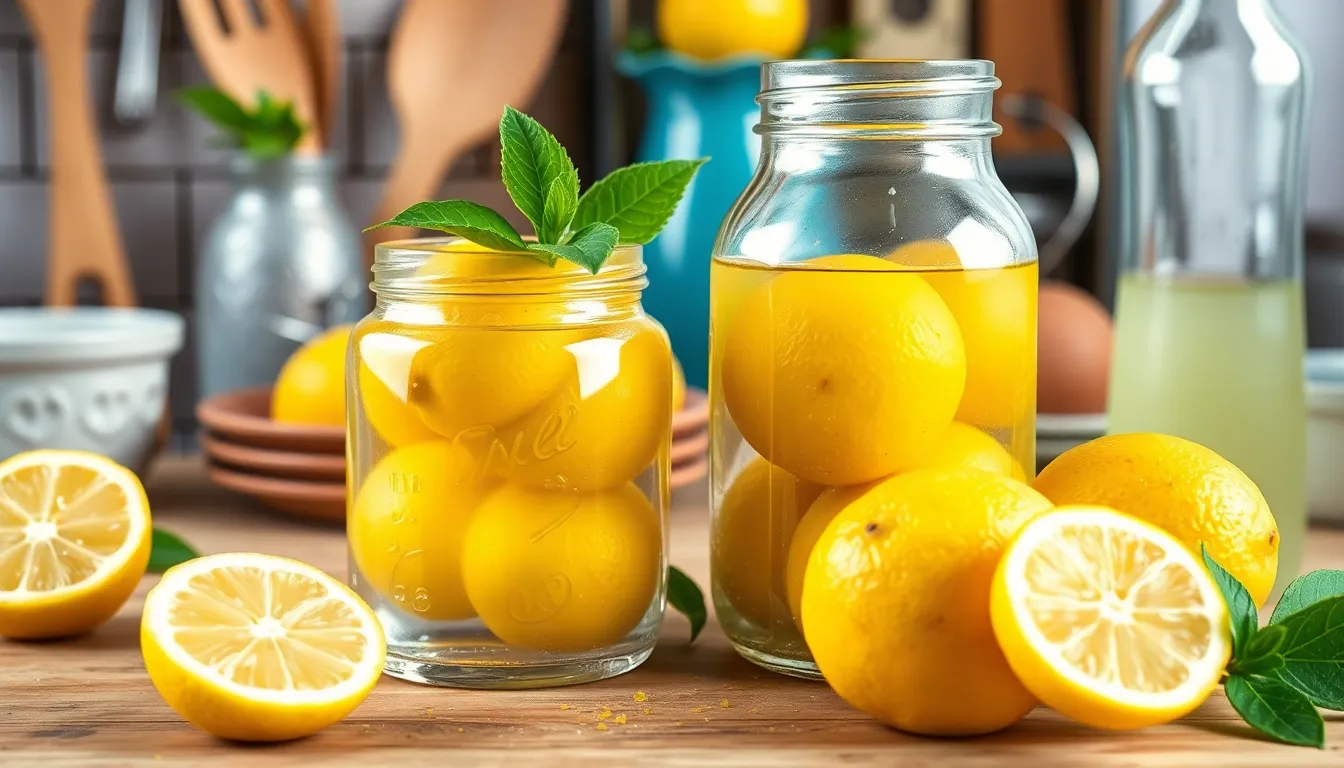
Follow these detailed steps to create perfect homemade limoncello that captures the essence of Italy’s beloved digestif. Our method ensures optimal flavor extraction while maintaining the bright clarity that makes limoncello so visually appealing.
Prep the Lemons
Wash and Dry: Clean your organic lemons thoroughly under cool running water to remove any surface residue. Pat each lemon completely dry with clean paper towels to ensure proper handling during the zesting process.
Peel the Lemons: Use a sharp vegetable peeler or microplane zester to carefully remove only the bright yellow outer zest from each lemon. Work systematically around each fruit while avoiding the bitter white pith underneath. The key lies in achieving thin consistent strips that contain maximum essential oils without any white portions that could introduce unwanted bitterness to your final product.
Create the Lemon Infusion
Zest and Alcohol: Place all collected lemon peels into a large clean glass jar with a tight fitting lid. Pour your high proof grain alcohol such as Everclear or premium vodka over the zest until completely covered. The alcohol should reach at least two inches above the peels to ensure proper extraction.
Infusion Time: Seal the jar securely and store it in a cool dark location away from direct sunlight for 15 to 20 days minimum. Gently shake the jar daily to promote optimal oil extraction and prevent the peels from settling. The liquid will gradually transform from clear to a beautiful golden yellow as the lemon oils infuse into the alcohol.
Make the Simple Syrup
Boil Water and Sugar: Combine 1.5 to 5 cups of filtered water with 700 grams to 3.5 cups of white granulated sugar in a heavy bottomed saucepan. Bring the mixture to a rolling boil while stirring constantly to ensure complete sugar dissolution.
Cool the Syrup: Remove the saucepan from heat immediately once the sugar completely dissolves and the mixture reaches a full boil. Allow the syrup to cool to room temperature completely before proceeding to the next step. This cooling process prevents cloudiness when combined with the alcohol infusion.
Combine and Age
Combine Infusion and Syrup: Strain the golden alcohol infusion through fine mesh cloth or cheesecloth into a large mixing bowl to remove all lemon peel pieces. Pour the cooled simple syrup into the strained alcohol infusion slowly while stirring gently.
Mix Well: Stir the combined mixture thoroughly for several minutes to ensure complete integration of the alcohol and syrup components. The limoncello should maintain its beautiful golden color and crystal clear appearance.
Bottle and Store: Fill clean sterilized glass bottles with your finished limoncello using a funnel to prevent spills. Store one bottle in the refrigerator for immediate enjoyment and keep remaining bottles in a cool dry place for future use. Your homemade limoncello will continue to mellow and improve in flavor over the following weeks.
Classic Italian Limoncello Recipe
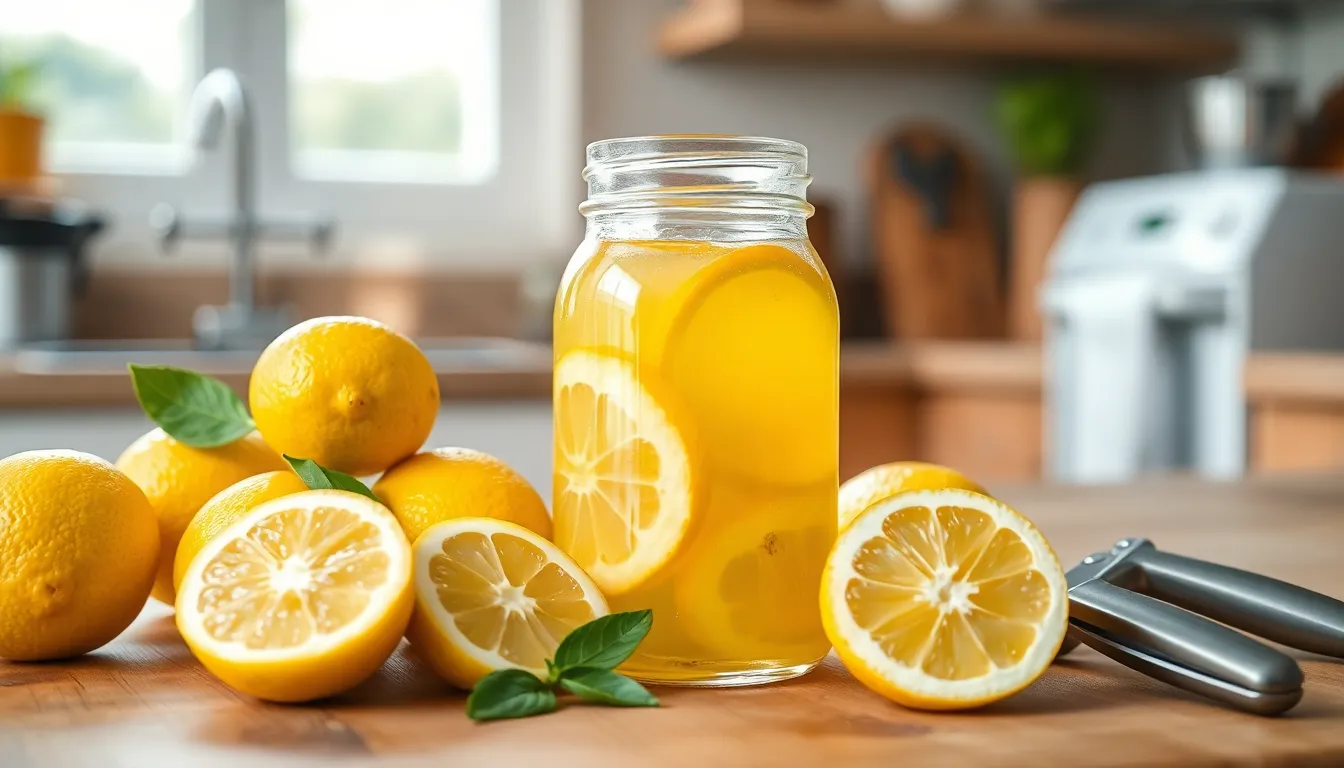
We’ve perfected this authentic Italian limoncello recipe using traditional methods passed down through generations. This time-tested approach creates the smooth and vibrant digestif that made the Amalfi Coast famous.
Prep
We start by gathering 8-10 large organic lemons and carefully washing them under cool water to remove any surface residue. Using a sharp vegetable peeler or microplane zester, we remove only the bright yellow outer zest while avoiding the bitter white pith underneath. Our zesting technique focuses on creating long thin strips that maximize surface area for optimal flavor extraction.
Next, we measure 1 liter of 95-degree pure alcohol such as Everclear or 100-proof vodka into our preparation area. We place the fresh lemon zest directly into a large glass jar and pour the alcohol over the peels until they’re completely submerged. The jar gets sealed tightly and labeled with the preparation date before we store it in a cool dark location away from direct sunlight.
Infusion Process
We allow the lemon zest to infuse in the alcohol for 15-20 days in our chosen dark storage space. During this crucial period, we gently shake the jar every few days to encourage the citrus oils to blend thoroughly with the alcohol. The mixture gradually transforms from clear to a beautiful golden yellow as the lemon essences are extracted.
Temperature control plays a vital role during infusion, so we maintain our storage area between 60-70 degrees Fahrenheit for consistent results. We monitor the color development and aromatic intensity to ensure proper extraction is occurring throughout the process.
Final Assembly
We prepare our simple syrup by combining 600-700 grams of white sugar with 1-1.5 liters of water in a large saucepan. The mixture heats over low flame until the sugar completely dissolves, creating a clear syrup that we allow to cool to room temperature before proceeding.
Using a fine mesh strainer lined with cheesecloth, we carefully strain the infused alcohol to remove all lemon zest pieces. We slowly combine the strained lemon-infused alcohol with our cooled simple syrup, stirring gently to achieve a uniform blend. The finished limoncello gets poured into clean sterilized bottles using a funnel for precise filling.
We store one bottle in the refrigerator for immediate serving while keeping the remaining bottles in a cool dry place for future enjoyment. Our homemade limoncello is ready to serve chilled straight from the freezer for the most authentic Italian experience.
Quick Limoncello Recipe
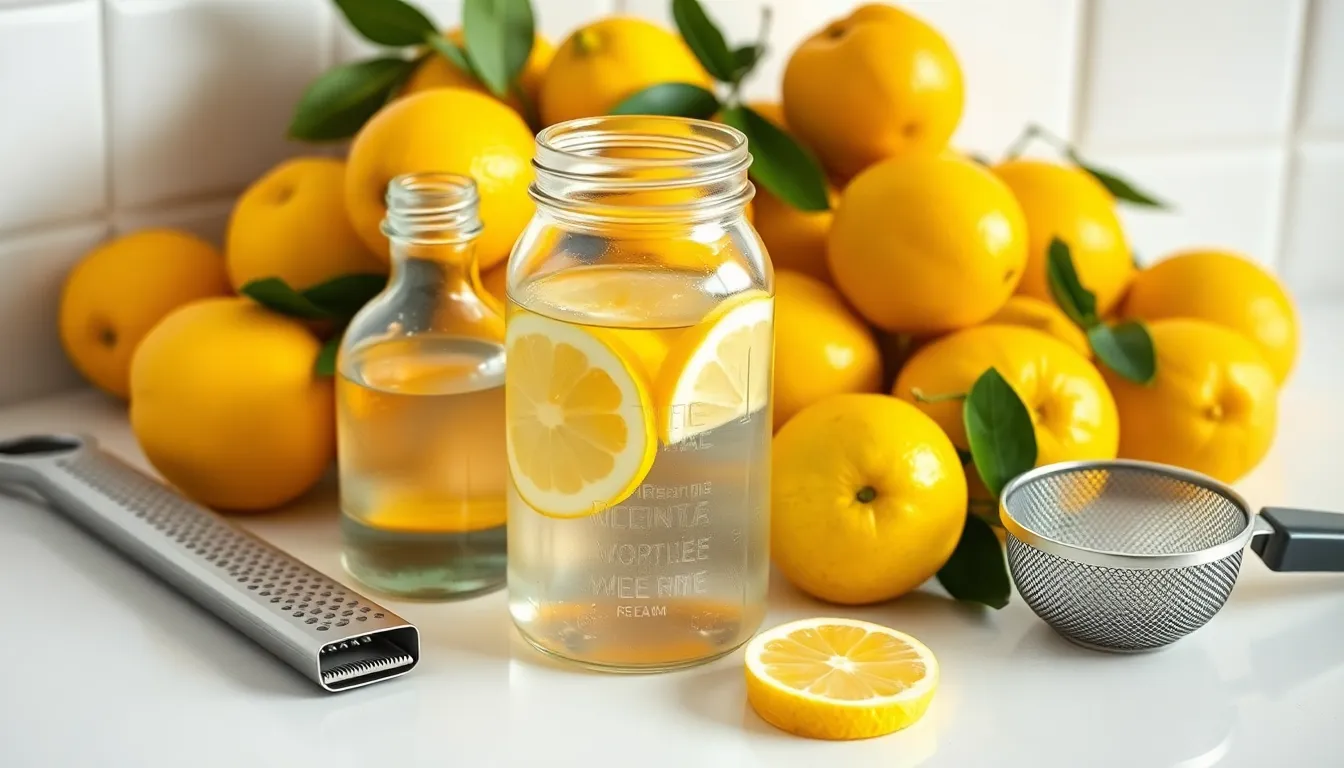
Sometimes we need limoncello for a special occasion but don’t have weeks to wait for the traditional infusion process. These accelerated methods deliver authentic flavors in a fraction of the time.
Prep
- 8 large unwaxed organic lemons
- 3 cups high-proof vodka (80-100 proof)
- 1 cup granulated sugar
- 1 cup filtered water
- Large glass jar with tight-fitting lid
- Microplane zester or vegetable peeler
- Fine mesh strainer
- Muslin cloth or coffee filter
- Glass bottles for storage
Wash and dry the lemons thoroughly before beginning. Remove the yellow zest using a microplane zester or sharp vegetable peeler while avoiding the bitter white pith completely. We recommend working over a clean cutting board to catch any fallen pieces.
Accelerated Method
| Method | Time Required | Temperature |
|---|---|---|
| Traditional Steeping | 4-6 weeks | Room temperature |
| Fast Infusion | 3 hours | Room temperature |
| Sous Vide Method | 2 hours | 140°F controlled |
| Accelerated Steeping | 1 week | Warm location |
Sous Vide Technique: Place lemon zest and vodka in a vacuum-sealed bag or mason jar. Set the sous vide circulator to 140°F and process for exactly 2 hours. This method extracts maximum oil from the peels without harsh alcohol flavors.
Fast Infusion Method: Combine the lemon zest with vodka in a glass jar and shake vigorously every 30 minutes for 3 hours. The frequent agitation accelerates the extraction process significantly.
Heat Simple Syrup Method: Bring sugar and water to a rolling boil then remove from heat immediately. Allow the syrup to cool completely to room temperature before proceeding. Never add hot syrup to alcohol as this creates cloudiness.
Strain the infused vodka through muslin cloth to remove all zest particles. Combine the strained alcohol with the cooled simple syrup and mix thoroughly. Pour into clean glass bottles and chill in the freezer for at least 2 hours before serving.
The accelerated limoncello reaches peak flavor within 24 hours of completion. We store ours in the freezer where it develops a perfect syrupy consistency for serving.
Limoncello Variations
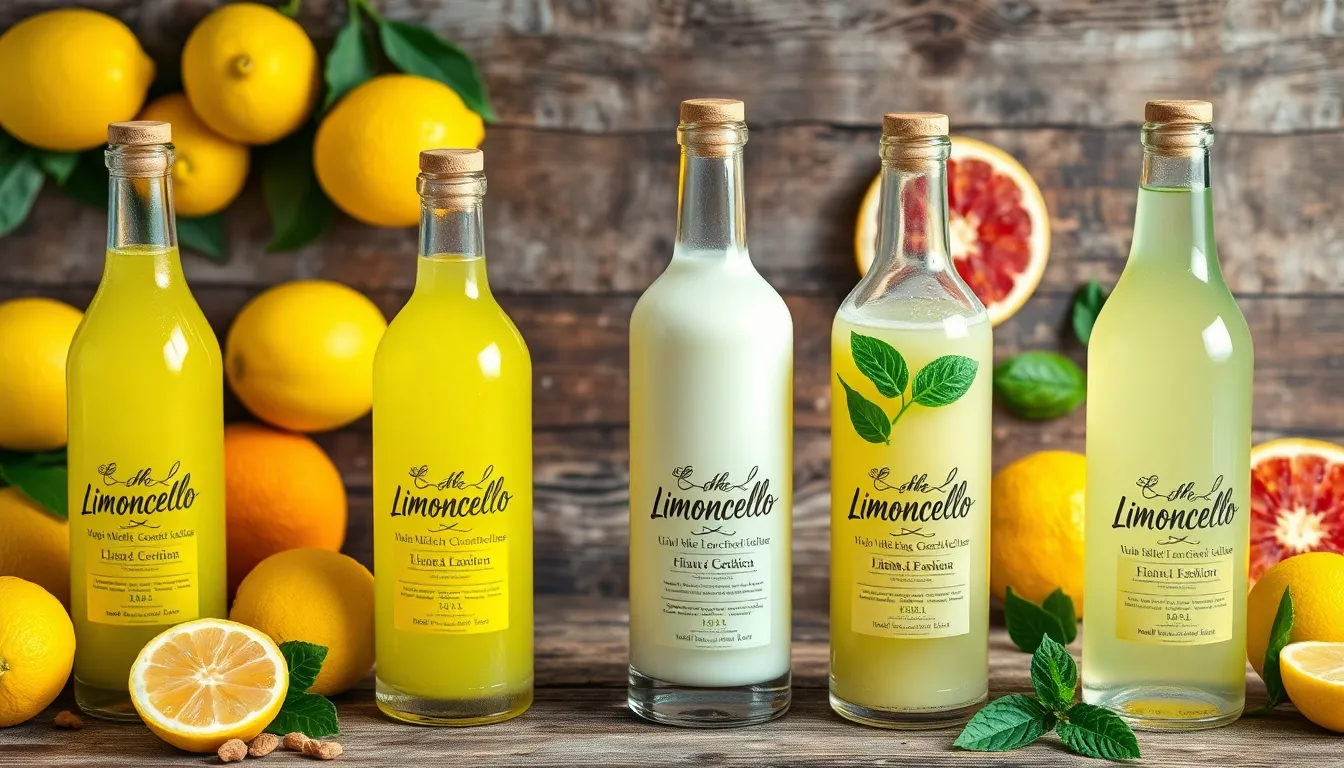
The beauty of limoncello lies in its adaptability to creative experimentation while maintaining its signature Italian charm. We can explore many variations that showcase different flavor profiles and textures beyond the traditional recipe.
Limoncello with Different Citrus
Branching beyond lemons opens up exciting possibilities for unique citrus liqueurs that follow the same fundamental principles. Arancello transforms sweet orange peels into a vibrant amber liqueur with warm citrus notes that complement desserts beautifully. We recommend using 10-12 organic oranges for this variation following the same infusion timeline.
Limecello delivers a tropical twist using fresh lime zest that creates a brilliant green hue and sharp citrus punch. The lime version requires 12-15 limes due to their smaller size and benefits from a slightly shorter infusion period of 10-15 days.
Grapefruit variations produce Pompelmo with its distinctive pink color and balanced sweet-bitter profile. We use 6-8 large grapefruits for optimal flavor extraction. Each citrus alternative maintains the same alcohol-to-water ratios while allowing the unique characteristics of different fruits to shine through.
Cream Limoncello Recipe
Cream limoncello transforms the traditional recipe into a luxurious dessert liqueur reminiscent of Italian gelato. We begin with our standard limoncello base and incorporate heavy cream or mascarpone cheese for richness.
Ingredients for cream addition:
- 1 cup heavy cream (38% fat content)
- 2 cups prepared limoncello (cooled completely)
- 2 tablespoons mascarpone cheese (optional)
Instructions: Whisk the heavy cream until it reaches soft peaks if using mascarpone. Gradually fold the cooled limoncello into the cream mixture to prevent curdling. The temperature difference is crucial here – both components must be thoroughly chilled before combining.
Strain the mixture through fine mesh to ensure smoothness and bottle immediately. Cream limoncello requires refrigeration and maintains peak quality for 2-3 weeks. We serve this variation over ice or drizzled over fresh berries for an elegant finish.
Herb-Infused Limoncello
Herbal infusions elevate traditional limoncello with sophisticated botanical notes that complement the citrus foundation. Fresh herbs release essential oils that marry beautifully with lemon zest during the alcohol extraction process.
Popular herb combinations:
- Fresh basil (6-8 leaves) creates Mediterranean complexity
- Mint sprigs (4-5 stems) add cooling freshness
- Rosemary (2-3 sprigs) contributes piney aromatics
- Thyme (3-4 sprigs) provides earthy undertones
We add the herbs during the initial lemon zest infusion period. Bruise the herb leaves gently between your fingers to release their oils before adding them to the alcohol mixture. The herbs infuse alongside the lemon zest for the full 15-20 day period.
Monitor the herb intensity after day 10 by tasting the infusion. Remove herbs earlier if the flavor becomes too pronounced. Strain the mixture thoroughly through multiple layers of cheesecloth to remove all plant matter before combining with the simple syrup. The resulting liqueur showcases layers of flavor that evolve with each sip.
Storage and Aging Instructions
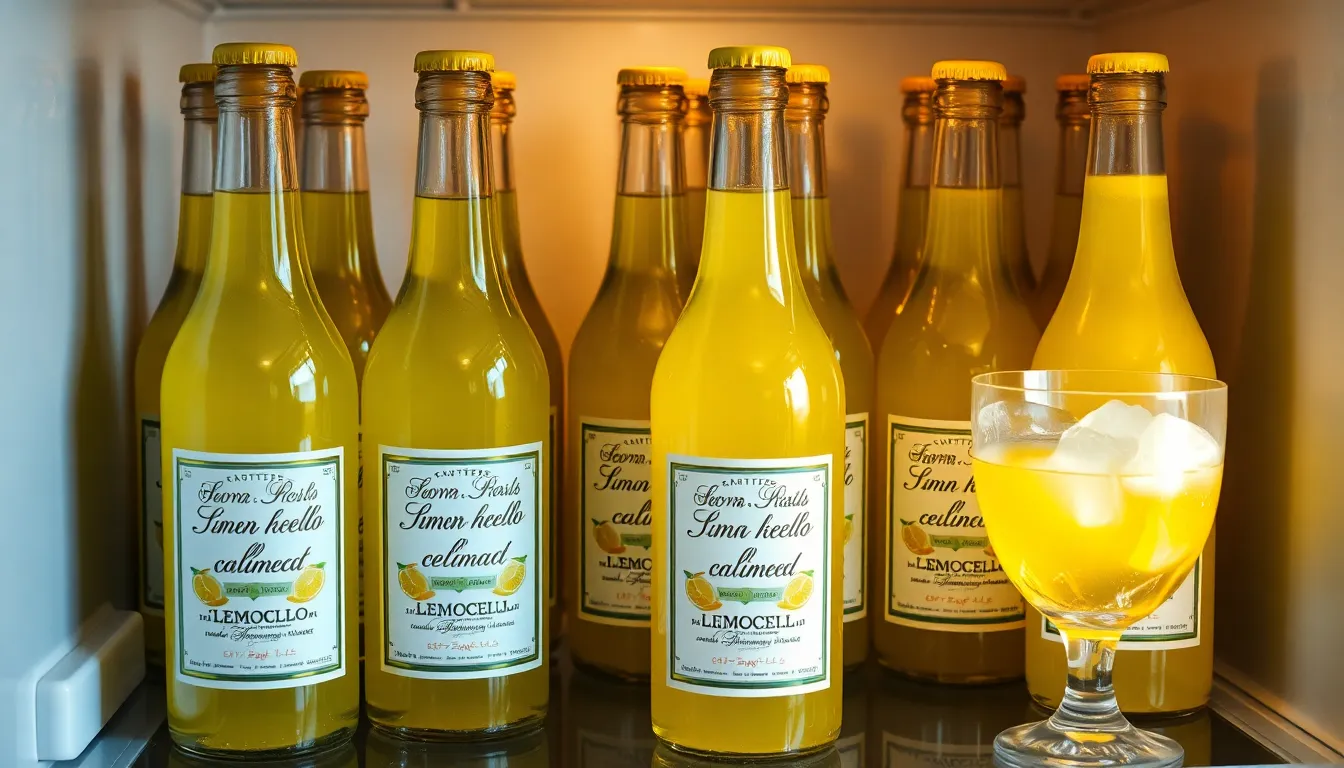
We recommend storing your freshly bottled limoncello in tightly sealed glass bottles to preserve its vibrant flavor profile. The refrigerator serves as the ideal environment for short to medium-term storage where your limoncello will maintain peak quality for up to two years. Freezer storage extends preservation even further while creating the perfect serving consistency that Italian tradition demands.
Optimal Storage Conditions
| Storage Method | Duration | Temperature | Serving Readiness |
|---|---|---|---|
| Refrigerator | 1-2 years | 35-40°F | Chill before serving |
| Freezer | Indefinite | 0°F | Ready to serve |
Your limoncello reaches its optimal serving temperature when stored in the freezer for several hours before guests arrive. This traditional approach ensures the liqueur maintains its smooth texture without freezing solid due to its alcohol content. We suggest keeping dedicated limoncello bottles in the freezer compartment for spontaneous entertaining moments.
Glass bottles with tight-fitting corks provide the best seal against air exposure that could diminish flavor intensity over time. Avoid plastic containers entirely as they allow alcohol evaporation and can impart unwanted flavors to your carefully crafted limoncello. Clean bottles thoroughly before filling to prevent contamination that might affect taste or shelf life.
Aging Considerations
The infusion process creates the foundation of flavor development but limoncello does not improve with extended aging once bottled. Peak flavor occurs immediately after the initial infusion period of 15 to 20 days when the lemon oils have fully extracted into the alcohol base. We recommend enjoying your limoncello within the first year of bottling for the brightest citrus notes.
Temperature consistency during storage prevents flavor degradation and maintains the liqueur’s characteristic clarity. Frequent temperature changes can cause cloudiness or separation that affects both appearance and taste. Store bottles away from direct sunlight and heat sources that accelerate flavor loss.
Serving Preparation
Traditional Italian service requires limoncello to be ice cold when poured into chilled glasses. We suggest placing glasses in the freezer alongside your limoncello bottles for authentic temperature matching. This attention to serving temperature enhances the liqueur’s refreshing qualities and provides the smooth finish that defines quality limoncello.
Serving Suggestions
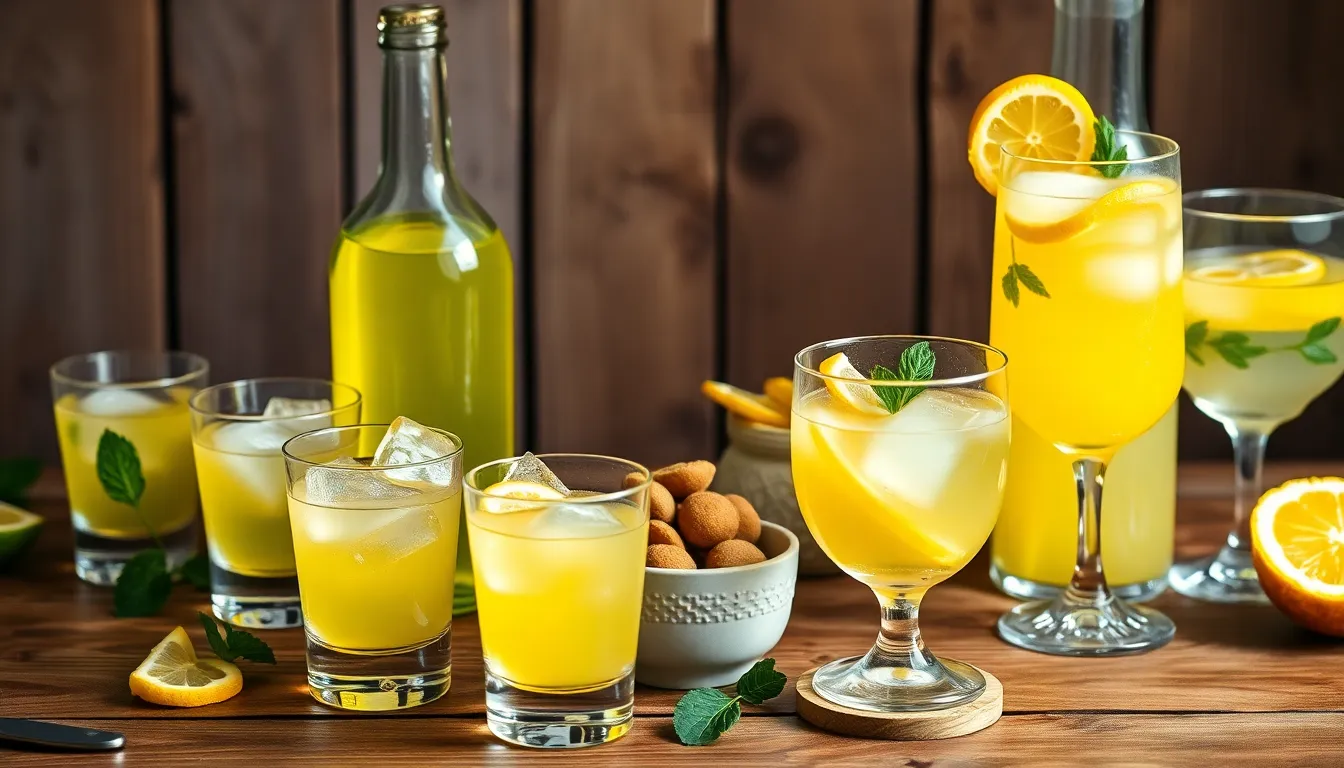
We believe serving limoncello properly transforms a simple drink into an authentic Italian experience. The presentation and temperature make all the difference in delivering the full flavor profile we’ve carefully crafted.
Traditional Serving Methods
We recommend serving limoncello straight in shot glasses or tulip tasting glasses for the most authentic Italian experience. The liqueur should be ice cold and ideally stored in the freezer before serving to achieve the perfect consistency and temperature.
We always chill our glasses beforehand to maintain the optimal serving temperature throughout the drinking experience. This traditional approach allows the full lemon flavor to shine while providing the smooth texture that makes limoncello so distinctive. Serve in small portions as Italians traditionally enjoy limoncello as a digestif after meals to aid digestion.
Limoncello Cocktails
We love creating refreshing cocktails that showcase limoncello’s versatility beyond traditional serving methods. The Limoncello Spritz combines our homemade limoncello with Prosecco and lemon-lime soda for a bubbly and citrusy aperitif perfect for summer gatherings.
For a more sophisticated option we recommend the Limoncello Martini which blends limoncello with vodka and fresh lemon juice. This cocktail delivers a perfect balance of citrus intensity with smooth alcohol warmth. We suggest garnishing with a twist of fresh lemon peel to enhance the aromatic experience.
Additional popular variations include limoncello mixed with tonic water for a light refresher or combined with fresh mint and soda water for a Mediterranean-inspired spritzer.
Dessert Pairings
We find that limoncello pairs exceptionally well with classic Italian desserts that complement its bright citrus profile. Tiramisù creates an outstanding combination as the coffee and mascarpone flavors balance beautifully with limoncello’s zesty character.
Lemon sorbet provides a refreshing dessert pairing that amplifies the citrus experience while cleansing the palate. We often drizzle a small amount of limoncello directly over the sorbet for an elegant presentation.
Panna cotta offers another excellent pairing opportunity where the creamy texture contrasts perfectly with limoncello’s bright acidity. The neutral flavor of panna cotta allows our homemade limoncello to take center stage while providing a luxurious mouthfeel that extends the tasting experience.
Troubleshooting Common Issues
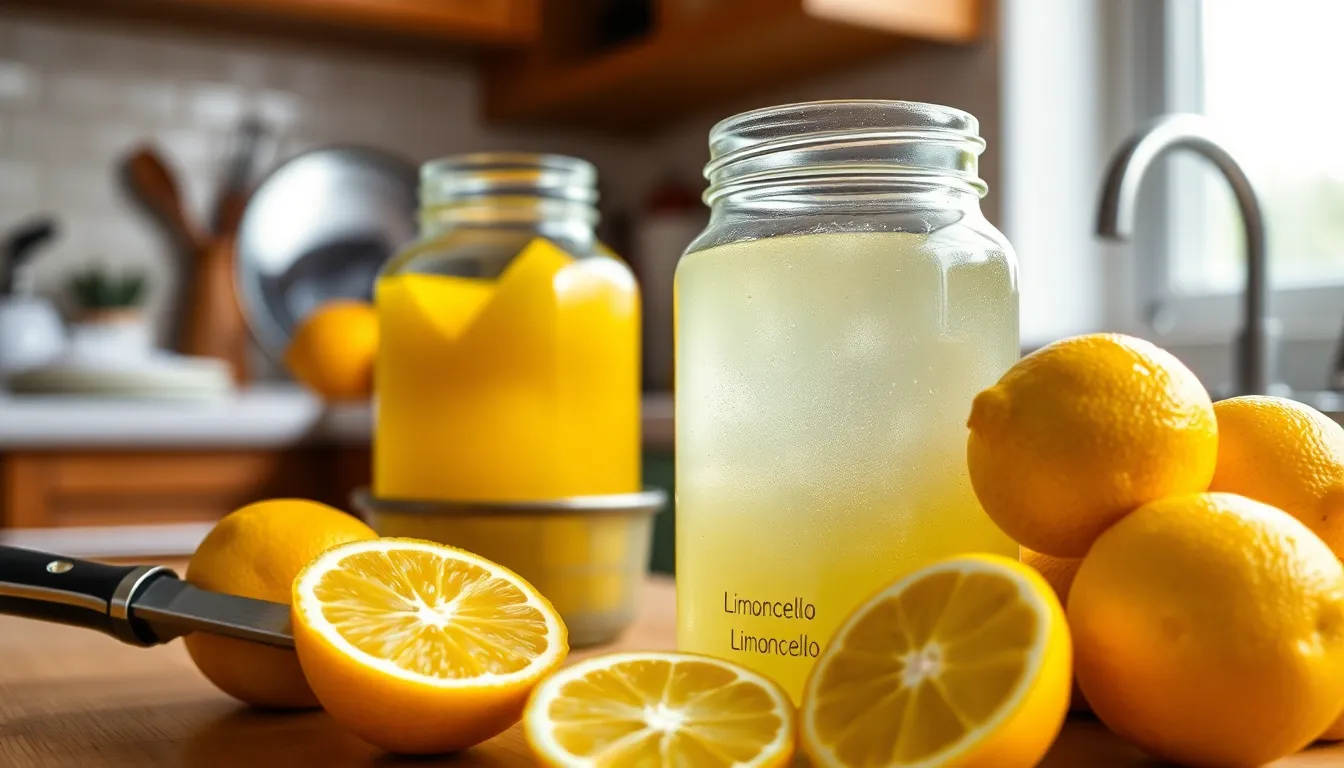
Making limoncello at home brings immense satisfaction, but we occasionally encounter challenges that can affect the final product. Understanding these common issues and their answers helps us create consistently exceptional batches every time.
Bitter Taste Problems
We often receive questions about bitter limoncello, and this issue typically stems from two primary causes. Pith inclusion during the zesting process creates the most common source of bitterness. When our zesting tools scrape too deeply into the lemon skin, we inadvertently capture the white pith layer beneath the yellow zest.
Using unripe lemons also contributes to an overly bitter flavor profile. We recommend selecting fully ripe, fragrant lemons with bright yellow skin for optimal results. To remedy existing bitter limoncello, we can add more fresh lemon zest to balance the flavor, though prevention through careful zesting remains the best approach.
Overly Boozy or Harsh Flavor
Harsh alcohol taste overwhelms the delicate lemon essence when our proportions become unbalanced. Insufficient simple syrup represents the primary culprit behind this common problem. We need to maintain the proper alcohol-to-syrup ratio to achieve smoothness without compromising the lemon intensity.
Adding more simple syrup gradually helps correct overly boozy limoncello. We should taste frequently during this adjustment process to avoid over-dilution. The goal involves creating harmony between the alcohol strength and citrus brightness rather than masking the alcohol completely.
Excessive Sweetness Issues
Too much sugar in our simple syrup creates cloyingly sweet limoncello that lacks balance. This problem often occurs when we modify traditional recipes without understanding the delicate sugar-acid balance that makes limoncello refreshing.
We can address overly sweet batches by diluting with additional lemon-infused alcohol or by blending with a less sweet batch. For future preparations, we should reduce the sugar content in our simple syrup and taste-test before final bottling.
Weak Lemon Flavor
Insufficient lemon character disappoints us after weeks of patient infusion. Poor quality lemons or inadequate steeping time typically cause this frustrating outcome. We need aromatic, oil-rich lemons to create the vibrant flavor we expect from authentic limoncello.
Extending the infusion period beyond the standard timeframe often resolves weak flavor issues. We can also add fresh lemon zest to existing batches and allow additional steeping time. Using more flavorful lemon varieties like Sorrento or Meyer lemons prevents this problem in future batches.
| Common Issue | Primary Cause | Solution | Prevention Method |
|---|---|---|---|
| Bitter Taste | Pith inclusion or unripe lemons | Add more fresh zest | Use fine zester, select ripe lemons |
| Too Boozy | Insufficient simple syrup | Add more syrup gradually | Maintain proper ratios |
| Too Sweet | Excessive sugar content | Dilute or blend batches | Reduce sugar in syrup |
| Weak Flavor | Poor lemons or short steeping | Extend infusion time | Use quality lemons, proper timing |
Make-Ahead Instructions
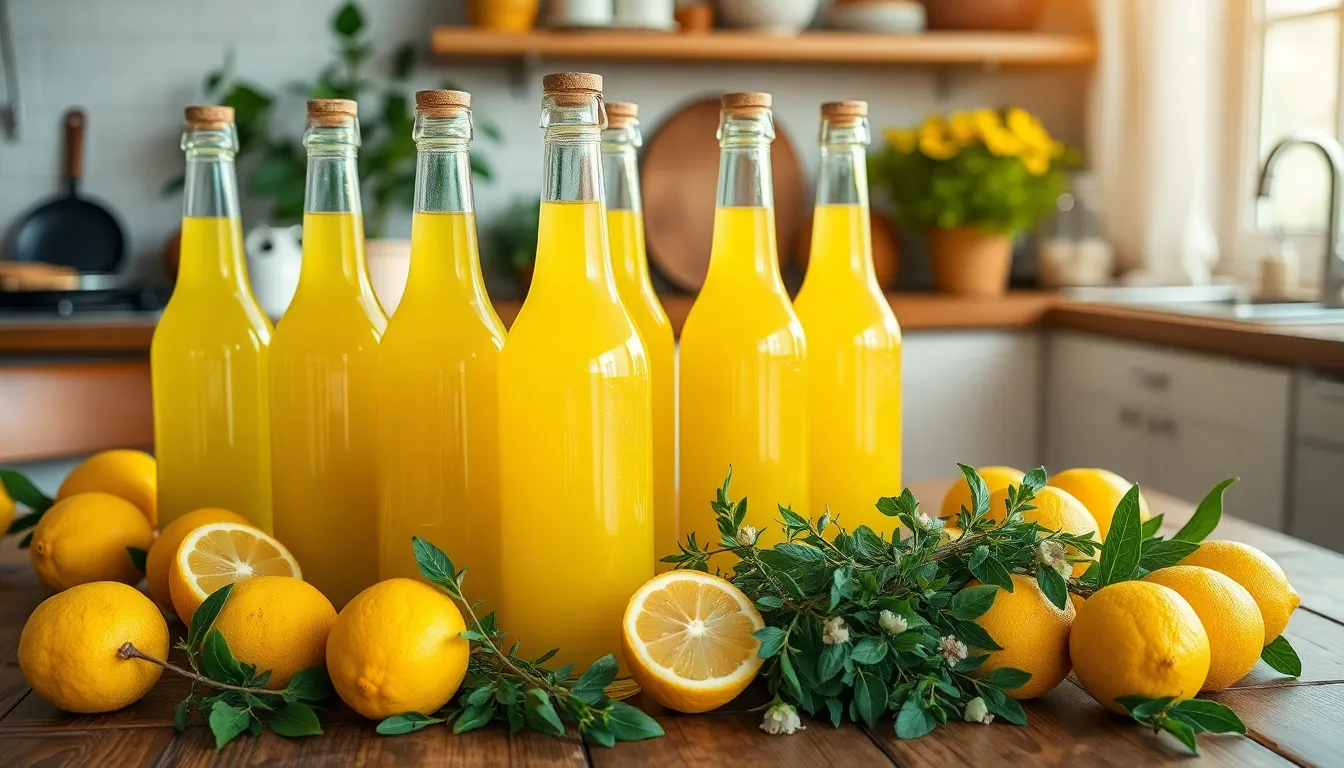
We recommend starting your limoncello preparation at least one month before you plan to serve it. The traditional infusion process requires 15 to 20 days minimum for proper flavor extraction, followed by an additional two weeks of resting time after combining with simple syrup.
Timeline Planning
For special occasions, we suggest this preparation schedule:
| Timeline | Task | Notes |
|---|---|---|
| 4-6 weeks ahead | Begin lemon zest infusion | Optimal flavor development period |
| 2-3 weeks ahead | Prepare simple syrup and combine | Allow flavors to marry |
| 1 week ahead | Final bottling and chilling | Ready for serving |
Advanced Preparation Steps
Begin by preparing multiple batches simultaneously to ensure you always have limoncello ready. We find that starting a new batch every two weeks creates a continuous supply for entertaining throughout the year. Store your infusing jars in a cool, dark location where temperature remains consistent between 60 and 70 degrees Fahrenheit.
Extended Storage Benefits
Creating limoncello well in advance provides several advantages beyond convenience. The extended aging process allows harsh alcohol edges to mellow while lemon flavors become more integrated and refined. We notice that limoncello aged for two to three months develops exceptional smoothness and depth.
Batch Size Considerations
Scale up your recipe when preparing make-ahead batches. Using our basic proportions of 12 organic lemons to 1000 mL of high-proof alcohol, you can easily double or triple quantities. Larger batches maintain more consistent temperatures during infusion and provide better value for your time investment.
Quality Control During Storage
Monitor your make-ahead limoncello monthly by checking for clarity and tasting small samples. Properly stored limoncello in tightly sealed glass bottles maintains peak quality for up to two years in the refrigerator. We recommend labeling each bottle with preparation dates to track aging progress and ensure optimal serving quality.
Serving Preparation
Transfer bottles to the freezer 24 hours before serving for ideal consistency. Keep dedicated limoncello glasses chilled alongside the bottles to enhance the drinking experience. This advance preparation ensures your limoncello achieves the perfect viscous texture that makes each sip memorable.
Conclusion
Creating authentic limoncello at home transforms a simple gathering into an unforgettable Italian experience. We’ve shared everything from traditional methods to quick techniques that deliver exceptional results in any timeframe.
The beauty of homemade limoncello lies in its simplicity and endless possibilities for customization. Whether you prefer the classic recipe or want to experiment with creative variations we’ve explored quality ingredients and proper technique remain the foundation of success.
With our comprehensive guide you’re now equipped to create this beloved liqueur with confidence. Start your first batch today and discover why limoncello has captured hearts for generations. The patience you invest will reward you with a liquid treasure that’s perfect for sharing or savoring solo.
Frequently Asked Questions
What is limoncello and where does it come from?
Limoncello is a traditional Italian digestif liqueur that originated on the Amalfi Coast. It’s a vibrant, sweet citrus liqueur made from lemon zest, high-proof alcohol, sugar, and water. Known for its bright yellow color and refreshing taste, limoncello is typically served chilled as an after-dinner drink and has become beloved worldwide for its authentic Italian charm.
What ingredients do I need to make homemade limoncello?
You need just four simple ingredients: 8-12 organic lemons (for zesting), 1 quart of high-proof vodka (80-100 proof), 4-6 cups of white granulated sugar, and 6-10 cups of filtered water. The key is using organic lemons to avoid wax and pesticide residues, and high-proof alcohol to effectively extract the lemon oils during infusion.
How long does it take to make limoncello at home?
Traditional limoncello requires 4-6 weeks for optimal flavor development. The lemon zest infuses in alcohol for 15-20 days minimum, followed by mixing with simple syrup and additional aging. However, quick methods are available using accelerated infusion techniques that can produce quality limoncello in just 2-3 hours for special occasions.
What type of lemons should I use for the best limoncello?
Organic lemons are essential to avoid wax coatings and pesticides. Sorrento lemons are considered the gold standard, while Meyer lemons offer a sweeter profile and traditional Eureka lemons provide classic tartness. The key is using fresh, high-quality lemons and carefully zesting only the yellow outer layer while avoiding the bitter white pith.
How should I store homemade limoncello?
Store limoncello in tightly sealed glass bottles in the refrigerator for up to two years or in the freezer indefinitely. Freezer storage is ideal as it maintains the perfect serving consistency and enhances the refreshing qualities. Avoid plastic containers as they can affect flavor. Limoncello doesn’t improve with extended aging once bottled.
What’s the best way to serve limoncello?
Serve limoncello straight in chilled shot or tulip glasses directly from the freezer. The ideal serving temperature enhances its refreshing qualities and full flavor profile. You can also use it in cocktails like Limoncello Spritz or Limoncello Martini, or pair it with desserts like tiramisù, lemon sorbet, or panna cotta.
Why is my homemade limoncello bitter or too harsh?
Bitterness usually results from including white pith during zesting or using unripe lemons. A harsh, boozy flavor indicates insufficient simple syrup in the mixture. To fix bitterness, add fresh lemon zest or start over with ripe lemons. For harshness, adjust the alcohol-to-syrup ratio by adding more simple syrup to balance the flavors.
Can I make variations of traditional limoncello?
Yes! You can create Arancello with oranges, Limecello with limes, or Pompelmo with grapefruits using the same infusion principles. Herb-infused versions with basil, mint, rosemary, or thyme add unique flavors. Cream limoncello incorporates heavy cream or mascarpone for a dessert-like richness while maintaining the classic Italian essence.
